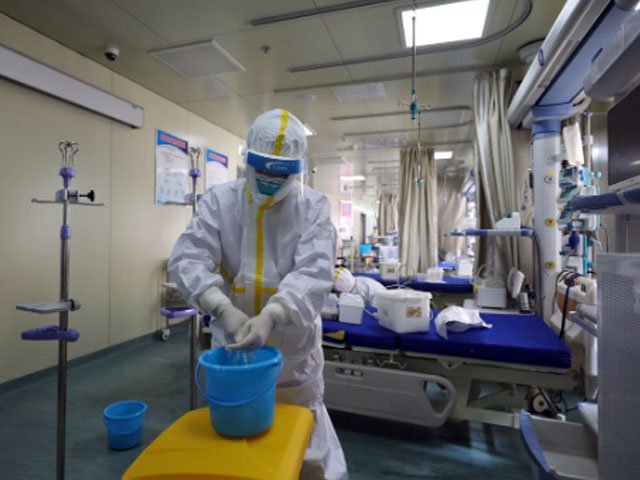
WHO provides step-by-step guideline for safe burial of COVID-19 patients
WHO provides detailed information on how to pack the body for transfer from hospital room to mortuary or burial site
KARACHI: The World Health Organisation (WHO) has provided a step-by-step guideline for the safe burial of a novel coronavirus infected patient.
It shared detailed information on how to prepare and pack the body and transfer it from the hospital room to an autopsy unit and then to mortuary, crematorium, or a burial site.
The world health body also advised those who come in close contact with the body including health care or mortuary staff or the burial team to apply standard precautions including hand hygiene before and after interacting with the infected patient's body.
"Use appropriate personal protective equipment (PPE) according to the level of interaction with the body, including a gown and gloves. If there is a risk of splashes from the body fluids or secretions, personnel should use facial protection, including the use of face shield or goggles and medical mask," the report stated.
Key points
- Prepare the body for transfer including removal of all lines, catheters and other tubes.
- Ensure that any body fluids leaking from orifices are contained.
- Keep both the movement and handling of the body to a minimum.
- Wrap the body in cloth and transfer it as soon as possible to the mortuary area.
- There is no need to disinfect the body before transfer to the mortuary area.
Funeral home/ mortuary care
The world health body has asked the healthcare workers and mortuary staff preparing the body for burial to wear appropriate PPE according to standard precautions.
"If the family wishes only to view the body and not touch it, they may do so, using standard precautions at all times including hand hygiene," read the report.
COVID-19: Mishandling of infected dead bodies spell anxiety in India
The WHO also prohibited the relatives to touch or kiss the body and recommended to avoid to embalm the body to avoid excessive manipulation. It also asked elderly and immunosuppressed persons to not directly interact with the body.
Burial
The health organisation said there is no harm in either burying or cremating people who have died from COVID-19.
"Family and friends may view the body after it has been prepared for burial, in accordance with customs. They should not touch or kiss the body and should wash hands thoroughly with soap and water after the viewing."
'Low testing rate leaves Pakistan, India blindfolded in dealing with COVID-19'
The report stated that those tasked with placing the body in the grave should wear gloves and wash hands with soap and water after removal of the gloves once the burial is complete.
Burial by family members or for deaths at home
The WHO said that in situations where mortuary services are not standard or reliably available, or where it is usual for ill people to die at home, families and traditional burial attendants can be equipped and educated to bury people under supervision.
"Any person (e.g. family member, religious leader) preparing the deceased in a community setting should wear gloves for any contact with the body. For any activity that may involve splashing of bodily fluids, eye and mouth protection (face shield or goggles and medical mask) should be worn," read the report.
It said that the clothing worn to prepare the body should be immediately removed and washed after the procedure, or an apron or gown should be worn.
Coronavirus forecast to render 18.5m jobless in Pakistan
"The person preparing the body should not kiss the deceased. Anyone who has assisted in preparing the body should thoroughly wash their hands with soap and water when finished," the report added.
The health organisation further said that children, older people, and anyone with underlying illnesses (such as respiratory illness, heart disease, diabetes, or compromised immune systems) should not be involved in preparing the body.
"A minimum number of people should be involved in preparations. Others may observe without touching the body at a minimum distance of one metre," the report added.











1714024018-0/ModiLara-(1)1714024018-0-270x192.webp)









COMMENTS
Comments are moderated and generally will be posted if they are on-topic and not abusive.
For more information, please see our Comments FAQ